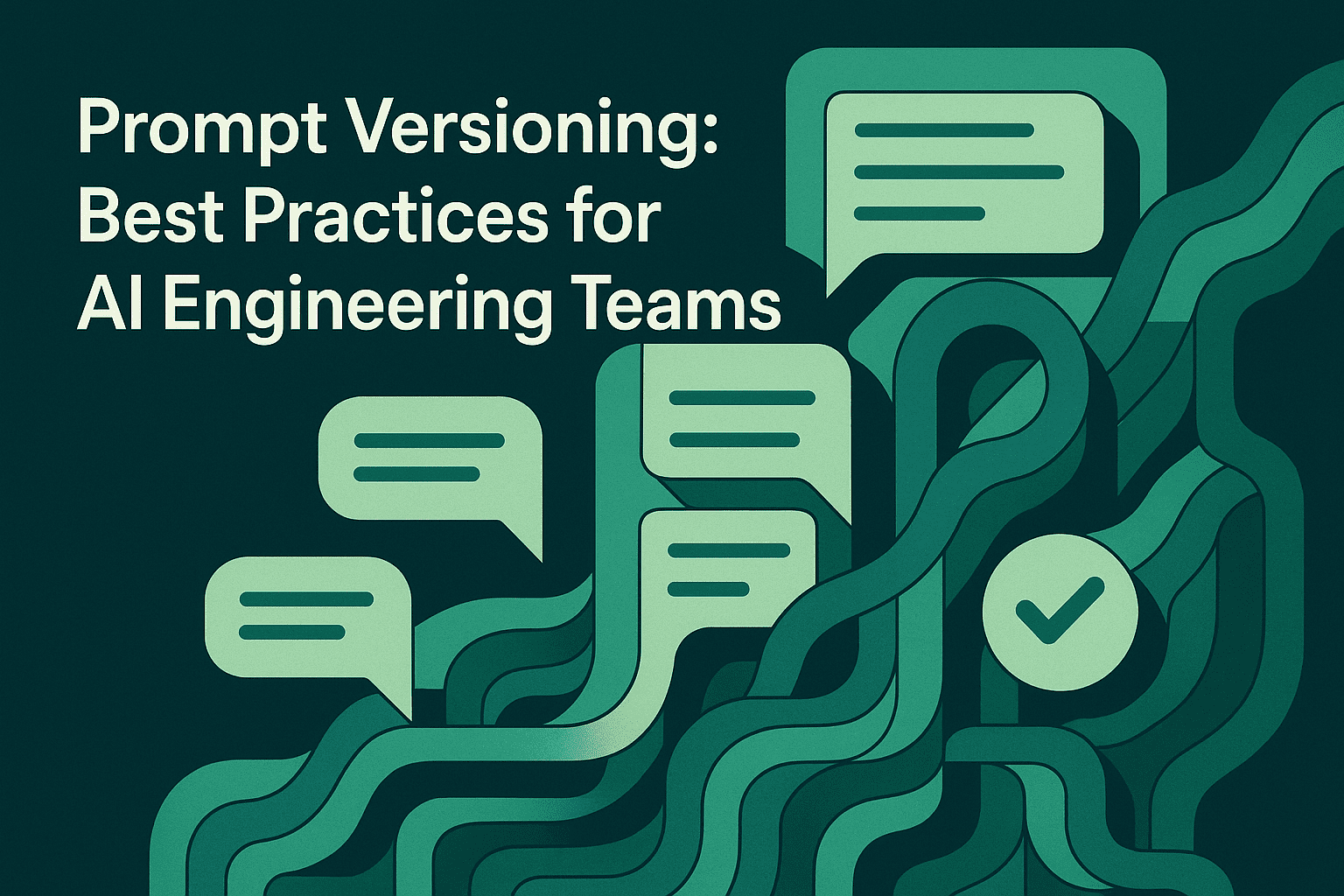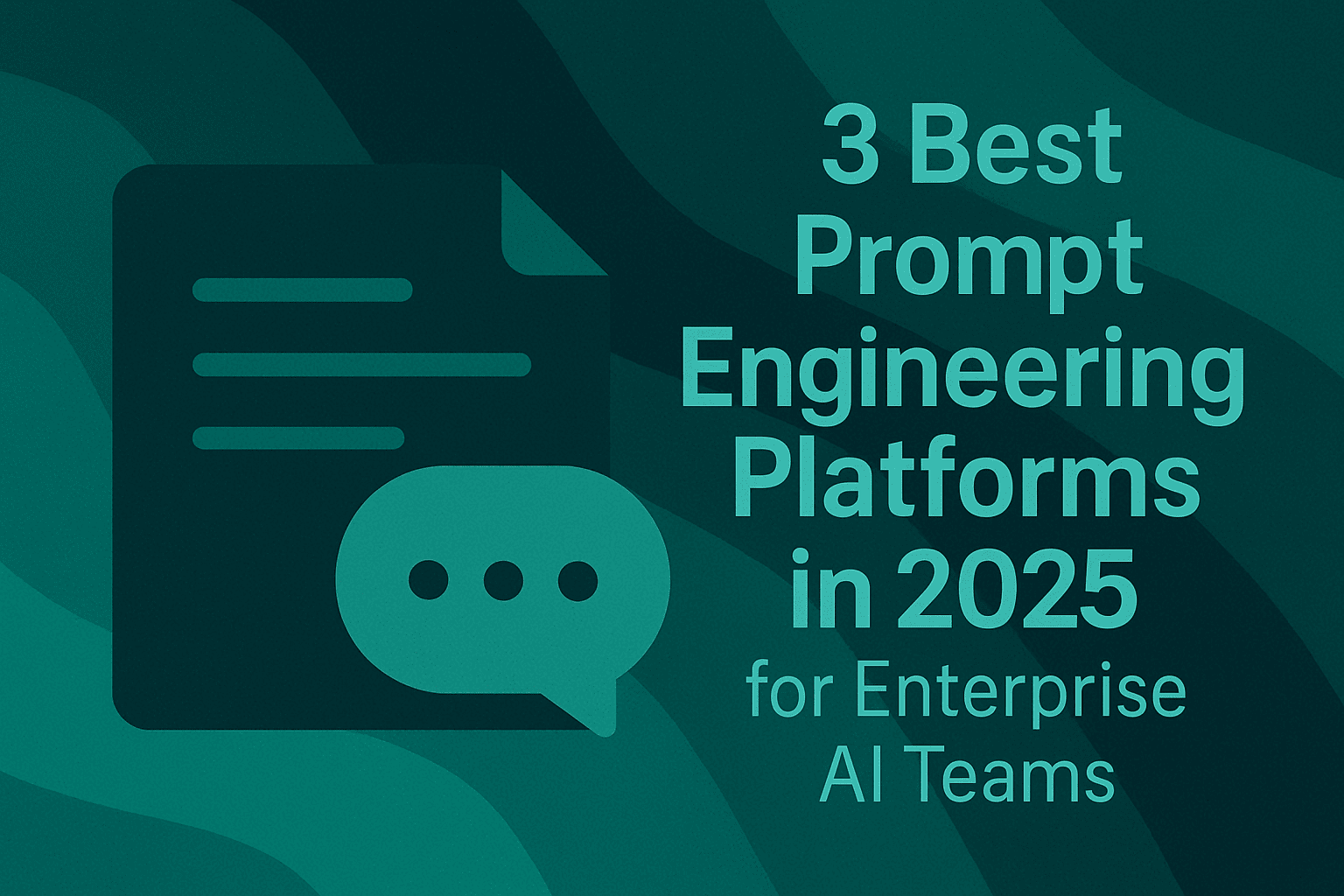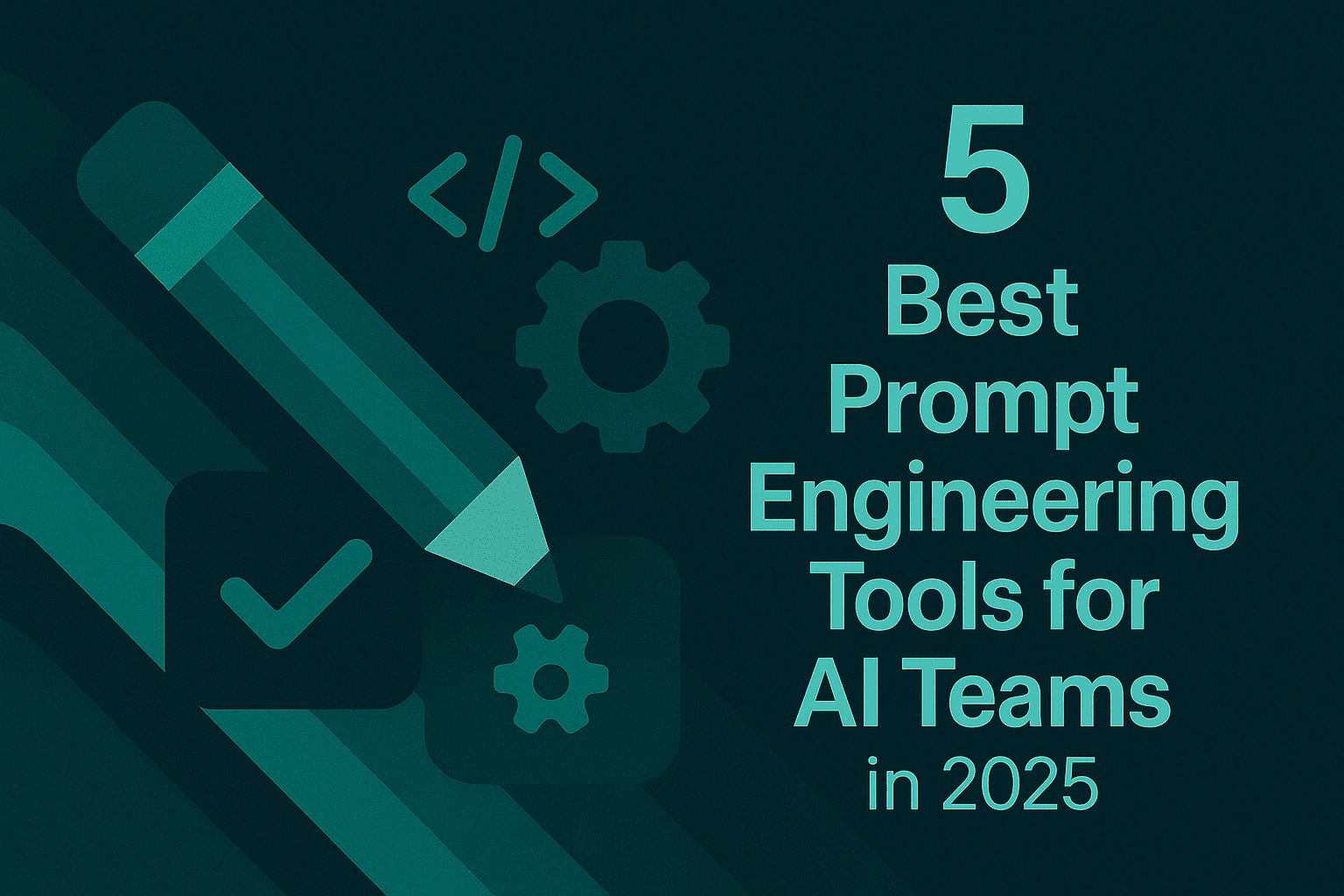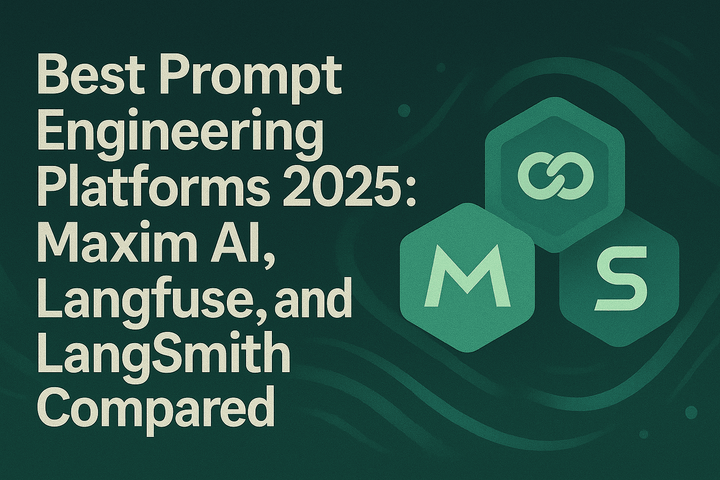Prompt Versioning: Best Practices for AI Engineering Teams

Prompt engineering drives AI agent quality, but without systematic version control, teams face cascading production issues. A single untracked prompt change can degrade output quality across thousands of user interactions, introduce safety violations, or break downstream integrations, often without immediate detection. As AI applications grow in complexity, prompt versioning transforms from an optional practice into an operational necessity.
This guide explains what prompt versioning entails, why it proves critical for production AI systems, and outlines best practices engineering teams can implement immediately. We demonstrate how Maxim AI's platform operationalizes prompt versioning across experimentation, evaluation, and deployment workflows.
What Is Prompt Versioning?
Prompt versioning applies software version control principles to prompt engineering workflows. Rather than editing prompts directly in production code or making ad-hoc changes without tracking, teams implement systematic processes that record every prompt modification, preserve historical versions, and maintain clear associations between prompt versions and system behavior.
Effective prompt management captures several key elements:
Version history: Complete records of all prompt changes including modification timestamps, authors, and descriptions of what changed and why.
Content snapshots: Preserved copies of exact prompt text for every version, enabling comparison across iterations and rollback to previous versions when needed.
Metadata tracking: Associated information such as target models, parameter configurations, deployment environments, and performance metrics for each prompt version.
Dependency mapping: Clear documentation of which application components, features, or user flows depend on specific prompt versions.
Without these elements, teams lose the ability to understand why system behavior changes, reproduce issues reliably, or deploy improvements with confidence.
Why Prompt Versioning Is Critical for AI Applications
AI applications exhibit unique characteristics that make version control essential for maintaining quality and reliability.
Non-Deterministic Outputs Require Historical Context
Unlike traditional software where identical inputs produce identical outputs, large language models generate variable responses even with identical prompts and inputs. When output quality degrades, engineering teams must determine whether issues stem from prompt changes, model updates, input distribution shifts, or other factors.
Prompt versioning enables teams to isolate variables by comparing current behavior against historical baselines with known prompt configurations. Without version history, debugging becomes impractical as teams cannot distinguish prompt-induced changes from other sources of variation.
Collaborative Prompt Engineering Requires Coordination
Modern AI applications involve multiple stakeholders, engineers, product managers, domain experts, and QA teams, all contributing to prompt development. Research on large language model evaluation shows that prompt quality significantly impacts output reliability, making collaborative refinement essential.
Without version control, concurrent edits create conflicts, overwrite improvements, and introduce regressions. Teams need mechanisms to review proposed changes, test modifications systematically, and merge improvements safely, practices that require robust prompt management infrastructure.
Production Incidents Demand Quick Rollbacks
When prompt changes introduce production issues, degraded response quality, safety violations, or task completion failures, teams must restore service quickly. Manual rollbacks without version control prove error-prone and slow, particularly when multiple prompts changed simultaneously or when the problematic version exists several iterations back.
Version control enables one-click rollbacks to known-good configurations, minimizing user impact during incidents. Combined with agent observability, teams can identify which prompt versions introduced issues and revert confidently.
Regulatory Compliance Requires Audit Trails
Industries with regulatory oversight, healthcare, finance, legal services, require comprehensive audit trails documenting system behavior and changes. Prompt versioning provides immutable records of what text the model received, when changes occurred, and who authorized modifications.
These audit trails prove essential for compliance reviews, incident investigations, and demonstrating due diligence in AI system governance.
Best Practices for Implementing Prompt Versioning
Effective prompt versioning requires deliberate processes that balance engineering rigor with practical workflow efficiency.
Establish a Clear Versioning Strategy
Define versioning conventions before building practices around them. Semantic versioning adapted for prompts provides a proven framework:
Major versions (1.0.0 → 2.0.0) indicate breaking changes such as fundamental restructuring of prompt logic, changes to output format that break downstream consumers, or shifts in task definition.
Minor versions (1.0.0 → 1.1.0) represent backward-compatible improvements like additional instructions, refined wording for clarity, or new examples that enhance quality without breaking existing integrations.
Patch versions (1.0.0 → 1.0.1) fix specific issues such as typo corrections, formatting adjustments, or minor clarifications that address edge case failures.
Document your versioning strategy clearly and train all team members on when to increment which version numbers. Consistency in versioning enables teams to understand change magnitude at a glance and make informed decisions about testing scope before deployment.
Maintain Comprehensive Documentation
Version numbers alone provide insufficient context for understanding prompt evolution. Each version requires documentation capturing:
Change rationale: Why the modification was necessary, what problem it addresses, or what improvement it enables. This context proves invaluable when evaluating whether to keep, modify, or revert changes.
Testing results: Performance metrics from agent evaluation showing how the new version performs against test suites. Include comparisons to previous versions on key quality dimensions.
Known limitations: Edge cases or scenarios where the prompt version shows suboptimal behavior. Documenting limitations prevents rediscovering known issues and guides future improvement efforts.
Deployment history: Where and when each version deployed, which user segments or features it serves, and any A/B testing or gradual rollout strategies employed.
Maxim's experimentation platform provides structured interfaces for capturing this documentation alongside prompt versions, ensuring metadata stays synchronized with prompt content.
Implement Systematic Testing Before Deployment
Every prompt modification requires evaluation before production deployment. Establish testing workflows that measure quality systematically:
Regression testing: Run new prompt versions against existing test suites to ensure improvements don't introduce new failures. Automated LLM evaluation enables rapid execution across hundreds of test cases.
Comparative analysis: Generate outputs from both current and proposed prompt versions on identical inputs. Side-by-side comparison reveals exactly how behavior changes, making quality assessment concrete rather than speculative.
Edge case validation: Test specifically against known failure modes, adversarial inputs, and boundary conditions. Ensure prompt changes address intended issues without creating new vulnerabilities.
Multi-model testing: If your application supports multiple model providers or versions, validate prompt performance across all supported models. Prompt effectiveness varies significantly across model families, requiring comprehensive prompt engineering validation.
Maxim's Playground++ enables rapid iteration and testing across prompt versions, model configurations, and parameter settings with unified tracking of quality metrics, cost, and latency.
Use Structured Deployment Processes
Deploy prompt changes through controlled processes that minimize risk:
Staging environments: Test prompt versions in non-production environments that mirror production configurations. Validate behavior under realistic conditions before exposing changes to users.
Gradual rollouts: Deploy new prompt versions to small user segments initially, monitor quality metrics closely, and expand deployment progressively as confidence grows. This approach limits exposure if issues emerge.
Feature flags: Decouple prompt deployment from code deployment using feature flags or experimentation strategies. This separation enables rapid iteration on prompts without requiring full application redeployment.
A/B testing: Run controlled experiments comparing prompt versions head-to-head with real user traffic. Measure impact on key metrics such as task completion rates, user satisfaction, and downstream conversion to make data-driven deployment decisions.
Agent observability provides real-time visibility into how prompt versions perform in production, enabling informed decisions about rollout progression or rollback necessity.
Enable Quick Rollbacks
Despite thorough testing, production issues sometimes emerge only under real-world conditions. Rollback mechanisms provide essential safety nets:
One-click reversion: Implement interfaces that restore previous prompt versions instantly without code changes or redeployment cycles. Speed matters when users experience degraded service.
Automatic rollback triggers: Define quality thresholds that automatically revert to previous versions when metrics degrade beyond acceptable bounds. Automated response minimizes manual intervention during incidents.
Version pinning: Allow explicit specification of which prompt versions serve which user segments or application features. This granular control enables selective rollbacks affecting only impacted areas.
Rollback validation: After reverting to a previous version, verify that quality metrics return to expected ranges. Monitoring confirms that rollback resolved the issue rather than exposing a different problem.
Track Performance Metrics by Prompt Version
Understanding prompt version impact requires systematic measurement:
Quality metrics: Track task completion rates, output correctness, safety compliance, and user satisfaction segmented by prompt version. Research demonstrates that evaluation strategies significantly influence AI quality outcomes.
Operational metrics: Monitor cost per interaction, latency distributions, and error rates across prompt versions. Some prompt strategies trade quality improvements for increased computational costs or latency.
Business metrics: Measure downstream impacts such as user engagement, conversion rates, and customer satisfaction. The ultimate value of prompt improvements manifests in business outcomes.
Agent monitoring with custom dashboards enables teams to visualize performance trends across prompt versions, user segments, and time periods, supporting data-driven optimization decisions.
Implementing Prompt Versioning with Maxim AI
Maxim AI's platform provides comprehensive infrastructure for prompt versioning across the AI development lifecycle.
Centralized Prompt Management
Playground++ serves as the central hub for prompt development and versioning:
Visual versioning interface: Create, edit, and organize prompts directly through an intuitive UI. Version history displays all modifications with timestamps, authors, and change descriptions.
Comparison views: Display multiple prompt versions side-by-side to understand exactly what changed between iterations. Textual diffs highlight modifications clearly.
Deployment without code changes: Push new prompt versions to production through the UI using deployment variables and experimentation strategies. This workflow decouples prompt iteration from engineering release cycles.
RAG integration: Connect prompts directly to retrieval pipelines and databases for testing grounded generation strategies. Iterate on retrieval-augmented prompts without infrastructure changes.
Systematic Experimentation and Testing
Maxim's experimentation capabilities enable rigorous prompt validation:
Multi-model comparison: Test prompt versions across OpenAI, Anthropic, AWS Bedrock, Google Vertex, and other providers simultaneously. Identify which model-prompt combinations deliver optimal quality, cost, and latency trade-offs.
Parameter exploration: Experiment with temperature, top-p, frequency penalty, and other generation parameters alongside prompt versions. Find configurations that maximize quality for specific use cases.
Cost and latency tracking: Measure computational costs and response times across prompt variants. Balance quality improvements against operational expenses systematically.
Comprehensive Evaluation Framework
Agent evaluation validates prompt versions through multiple assessment approaches:
Automated evaluators: Deploy deterministic rules, statistical metrics, and LLM-as-a-judge evaluators to measure quality automatically across large test suites. Configure evaluators at session, trace, or span level depending on your architecture.
Human review workflows: Collect expert feedback on prompt outputs for nuanced quality assessment. Research confirms that human evaluation remains essential for high-stakes applications.
Simulation-based testing: Use agent simulation to validate prompt behavior across diverse scenarios and user personas before production deployment. Identify failure modes early when fixes cost less.
Production Monitoring and Observability
Agent observability tracks prompt version performance in production:
Distributed tracing: Monitor how specific prompt versions behave across real user interactions. Trace execution paths through multi-agent systems with span-level detail.
Quality monitoring: Run automated evaluations continuously on production traffic. Detect quality degradation quickly when prompt versions underperform in real-world conditions.
Custom dashboards: Visualize performance metrics sliced by prompt version, user segment, conversation type, or business dimension. Build views that surface insights most relevant to your optimization goals.
Alert configuration: Set thresholds for quality metrics and trigger notifications when prompt versions show concerning trends. Route alerts to appropriate teams for rapid response.
Data-Driven Iteration
The Data Engine closes feedback loops between production and development:
Production log curation: Convert live interactions into evaluation datasets that reflect real-world complexity. Ensure test suites evolve alongside actual usage patterns.
Failure case extraction: Automatically identify and extract problematic interactions where prompt versions performed poorly. Use these cases for targeted testing and improvement.
Synthetic data generation: Expand test coverage by generating synthetic variations of real scenarios. Stress-test prompt versions against edge cases before deployment.
Common Pitfalls to Avoid
Several anti-patterns undermine prompt versioning effectiveness:
Skipping documentation: Version numbers without context create confusion later. Always document why changes occurred and what testing validated them.
Insufficient testing scope: Testing only happy paths misses edge cases and failure modes. Comprehensive test suites should cover diverse scenarios, user personas, and adversarial inputs.
Ignoring downstream dependencies: Prompt changes can break integrations that depend on specific output formats or content structures. Map dependencies explicitly and validate them during testing.
Manual deployment processes: Human-driven deployments introduce errors and delays. Automate deployment workflows to ensure consistency and enable rapid iteration.
Inadequate monitoring: Deploying without observability leaves teams blind to quality degradation. Instrument monitoring before deploying new prompt versions.
Conclusion
Prompt versioning transforms ad-hoc prompt editing into systematic engineering practice. By implementing clear versioning strategies, comprehensive documentation, rigorous testing, structured deployment processes, and continuous monitoring, teams ship AI applications with confidence and respond to issues rapidly.
Maxim AI's platform operationalizes prompt management end-to-end, from experimentation and testing through deployment and production monitoring. Teams gain the infrastructure, workflows, and visibility required to iterate on prompts safely while maintaining high AI quality standards.
Ready to implement robust prompt engineering practices? Book a demo to see how Maxim accelerates prompt engineering workflows, or sign up now to start managing prompts systematically and shipping higher-quality AI applications today.
References
- Wang, Y., et al. (2024). Benchmarking Generation and Evaluation Capabilities of Large Language Models for Instruction Controllable Summarization. arXiv preprint.
- Agarwal, S., et al. (2025). No Free Labels: Limitations of LLM-as-a-Judge Without Human Grounding. arXiv preprint.


